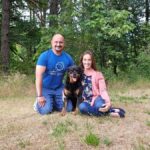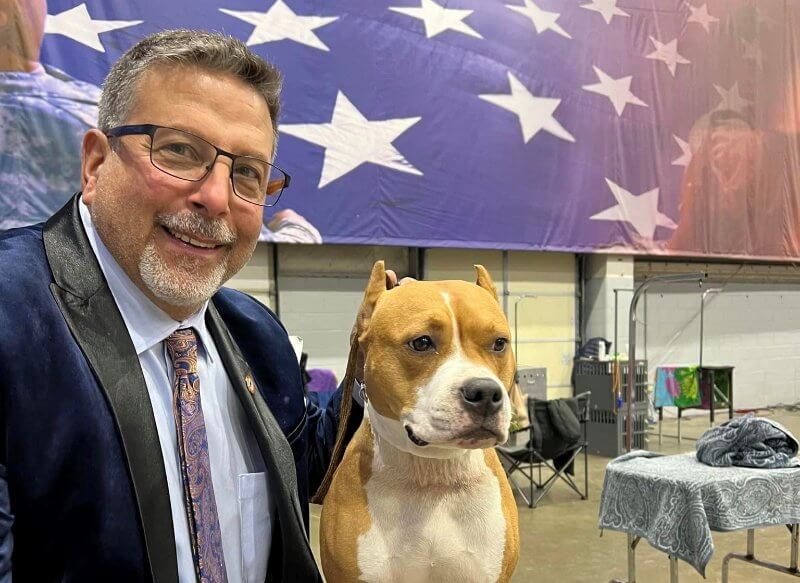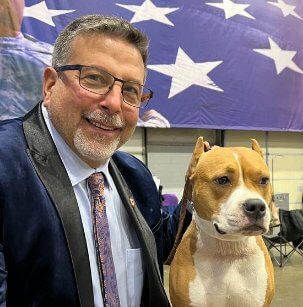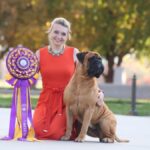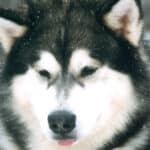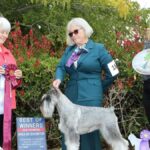For those of you who read my series, you might find this article to be a departure from my usual scientific look into the world of people and dogs. Instead, I want to embrace some of the common ground that probably amplified our interest in dogs and led us, eventually, to the world of breeding and showing purposefully bred dogs.
It really all begins with that connection that we have discovered with our canine companions. Ever since dogs were domesticated between ten and fifteen thousand years ago, they have been our companions, workers, guardians, and extensions of our own capacities. As much as we learn and train them, they learn and train us, and become an indelible part of our lives. Our dogs are truly woven into the tapestry of our lives, each earning a special place in our hearts and in our souls. This is a tribute to my dogs, my friends, and my companions who make up my identity.
I really do not remember life without a dog. My first dog was a German Shepherd Dog named “Jet.” My parents both grew up with dogs, and for my father who had been in the Navy and was a bit of a tough guy, there was no other dog in the 1960s than a GSD. My parent’s first house was on the smaller side, and Jet had an indoor/outdoor run that was attached to the garage. As a young child, I would spend hours outside with him playing in the backyard. He was my friend and protector.
Over the course of my life, there are many lessons that I learned from my dogs. Within the bond I built with Jet, I learned the meaning of loyalty and trust. Reflecting on my early life as an adult, I recognize that trust is not an intrinsic trait—and it must be learned. As a shy child who did not trust easily, my steadfast and loyal friend Jet taught me that it was possible to trust, and that trust required reciprocity. Just like he protected me, I needed to look after his needs as well. Sadly, as we all know, we always have to say goodbye to our dogs too soon, even if they live to fifteen.
A few years later, my parents became interested in Standard Poodles. We purchased our first Poodle whom we named “Ari,” which means lion in Hebrew. We had spent a short time living in Israel and we brought him home shortly after our return. Ironically, Ari was no lion, but he was perhaps the sweetest, smartest dog that I ever knew.
My father went to school to learn how to groom dogs, and Ari was the first in my parent’s history of breeding and showing Poodles. I was ten years old when he came into our lives, and he immediately became my best friend. I spent time grooming, training, and playing with him. As a somewhat shy kid, he really was the center of my world. While Ari never developed into a show dog, he meant more to me than all the Best in Show ribbons in the world.
For me, it has only been about the dogs. Ari was my anchor in the rough sea of being a shy kid in Middle School. Sadly, he had a genetic disorder and his time with me was only a few years. This was probably the first epic loss of my life; I still tear up just thinking about him. We laugh with our dogs, we cry with our dogs, and when they leave they take a part of us
with them.
My parents had been looking for another Poodle, and shortly after Ari’s passing we brought home “Yaffa,” whose name means beautiful in Hebrew. Looking back, I laugh at the name choice because she was a “doggie-looking” bitch, with a bad front and a low tail-set. So much for that show prospect! My parents had not figured out the nuances of canine structure, so they had to trust the breeders—who apparently knew little more than my parents. Can you believe there are people who show dogs and don’t know structure? Enough said on that topic!
My parents spent some time researching Yaffa’s line and found an appropriate breeding partner. For the Poodle enthusiasts reading this, my parent’s dogs were white, cream, and apricot, tightly linebred on Alekai lines. Yaffa became the foundation bitch of my parent’s line and did not reproduce the negative traits that she possessed.
Living with Poodles provides a unique education in dogdom. My parent’s success in breeding led them to having ten Poodles within a few years—in our 1700 sq. ft. house with a small yard. These dogs were my introduction to dog shows, grooming, coat maintenance, and so much more. Our den became a grooming area where there was constant work that needed to be done. If that wasn’t enough, my parents opened a grooming shop nearby, and I had the joy of grooming other people’s dogs after school.
Aside from the dogs, the only thing that I really enjoyed was going to dog shows, spending time under the grooming tent, helping anyone I could, and learning to show dogs. I really take pleasure now in spending time with my childhood heroes and mentors. I love seeing Peter Green sitting ringside as I am showing, and I love sitting with Joan Huber to watch Groups, and reminding Gail Wallanuik that I knew here when she had long dark hair, and reminiscing with Patty Proctor.
While my parents were having success with Poodles, my father wanted to find a breed that we could show ourselves, one that did not have the insane amount of coat-care that we had with Poodles. He was immediately attracted to the American Staffordshire Terrier. I was fifteen when we got our first AmStaff, “Missy,” who quickly became my friend and companion. I did enjoy the Poodles and I always say that if I could only have one pet, it would be a Standard Poodle. However, for the last forty-plus years I have had AmStaffs in my house.
I was sixteen years old the first time I showed Missy. Being a teenager and not having the life demands that we have as adults, I spent a great deal of time working with her and training her. Ironically, having been coached by Poodle handlers, I learned to “Poodle” in the ring, which I will do occasionally except when I am helping Margery Good; she’s not a fan of “Poodling.”
Missy was the first dog I finished, and as I became more confident in the ring I showed my parent’s Poodles since they didn’t really have the money to pay professional handlers. One of my most memorable moments showing a Poodle took place at the show that was held at the Armory in Schenectady, New York. I was showing my parent’s specials dog, and I was in the ring with Wendell Sammet, who had a lovely bitch special, and a few other handlers.
This was before we entered the ring in numerical order, so I took my big male special into the ring and went to the front of the line. Wendell walked in and went in front of me and asked me to back up. I didn’t protest. He was one of my heroes. If he wanted to go first, I’d let him go first. An historical fact is that this was before they began taping the mats to the floor, so there were often loose spots. We circled the ring and, when rounding the last corner, Wendell tripped. I leapt over him, only to turn around and notice that he had rolled back up to his feet—losing only about one step. Wendell attributed his ability to fall and get up to his military training. He took Breed and I got Opposite.
Missy had a good show career, and my success with her and with Poodles led me to handling dogs for other people. For those who are not aware, AmStaffs are uniquely loyal and friendly “people dogs.” My AmStaffs have always been great breed ambassadors, and anyone who knows my dogs knows that their temperaments are exceptional with both people and other dogs.
When I was a sophomore in college, I brought Missy along and she had a wonderful college experience, being the center of attention at parties and accompanying me on many journeys. She probably served as a “therapy dog,” as she provided me with stability and companionship when I was away from home. Missy accompanied me through college, saw me get married, and was my kids’ first dog.
While I could easily continue sharing stories about my personal connection with my dogs, I know that readers have their own personal connections and stories.
I would love to hear about them on my Facebook page dedicated to my SHOWSIGHT articles:
https://www.facebook.com/groups/dogshowpsychology.
Conclusion
I know for certain that anyone who is involved with dogs and conformation dog shows has a similar story to tell about their own dogs. As I was recalling my stories, remembering my dogs, I was in tears and could barely see my computer monitor. My personal history here ends in the early 1990s, as I was too emotionally spent and could not go on further. I may be a sap, but I cry to my current dogs and tell them stories about the ones who came before them. (Tears streaming.) My dogs comfort me as they feel my emotional pain. I am truly blessed to have loved and been loved so deeply, and that connection continues with my dogs today.
In return for their love, my dogs live amazing lives; sleeping in my bed, waiting patiently as I distribute equal portions of human food to them, running in the yard, and getting ready for and going to dog shows. I have friends who have told me that when they die they want to come back as my dog. I have to say, it really isn’t a bad deal. But I believe that I am luckier than they are!
Tell me about your life with dogs, and see you in the show ring!
